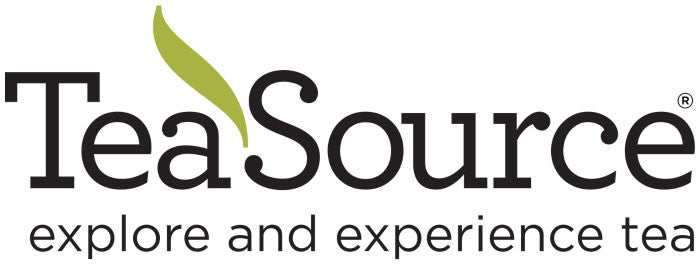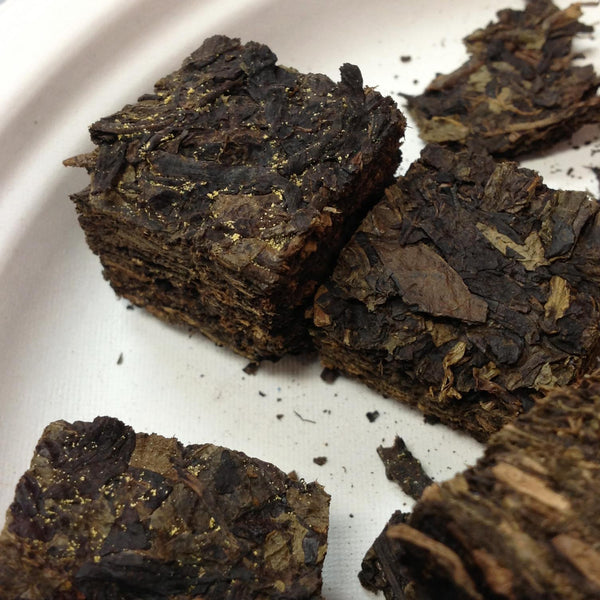Dark tea is unique because it is the only deliberately aged tea that undergoes a secondary fermentation process. Because of this additional step, it contains an active micro-organism called Golden Flowers (Eurotium Cristatum). This micro-organism is present specifically in Dark tea made in Anhua County, Hunan Province, China. Golden Flowers is actually visible in some Dark teas and looks like tiny yellow flecks. If you want to experience Golden Flowers up close and personal, check out our Fu Cha brick.
Puer, which is a sub-category of Dark tea, contains a different micro-organism called Asper Nigellus. This is due to variation in growing conditions, soil, and geography. Golden Flowers is a relatively new discovery, having just been identified in the last 30 years. To this day, the process of making Dark tea is a closely guarded secret. Here are some quick facts about Anhua Dark tea for all you biochemistry buffs out there:
- Significant polyphenol content
- Significant L-Theanine content
- Significant thearubigin & theaflavin content
- Significant polysaccharide compounds
Dark tea is a critical source of minerals and nutrients to people in many areas of China. Over the past several years TeaSource has had the opportunity to work with Ms. Zhang Liumei, tea scientist and co-founder of Yiqingyuan Tea company in Hunan Province. Ms. Zhang created one of our most popular and unique teas, Dark Rose, which is pressed into a small heart shape. She describes it as “a spa in a cup” and she’s right. It’s a perfect introduction to this fascinating category of tea.



Comments
Very interesting read! It’s also good to note that the micro-organisms in these darker, fermented teas can help some people with digestive issues. We recommend drinking a cup of Pu-erh before a large meal to help digestion.
Would it be possible for you to cite any references that identify the presence of the compounds you mention in these types of tea?
I am concerned about contaminants such as heavy metals in the tea. Lead has been found in green tea. Are these teas tested for metals or other pollutants?